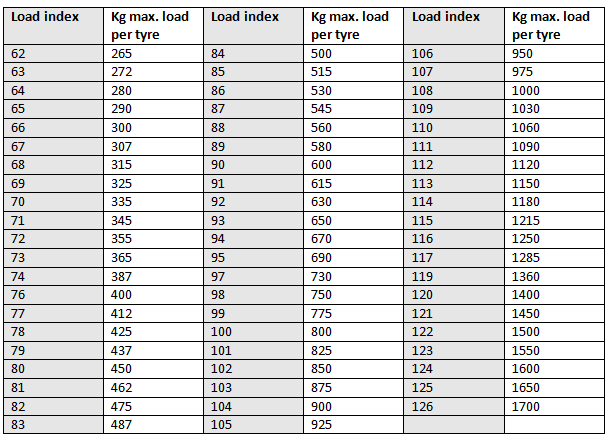Quality Brands at Great Prices. Research and Shop at Tire Rack! What You Are Looking For! Performance Comparisons. While Z-speed rated tires are capable of speeds in excess of 1mph , how far above 1mph was not identified.
A tire’s speed rating indicates the optimal speed that the tire can safely maintain over time. In short, it’s the fastest speed a tire can handle before it no longer performs as designed. The higher the speed rating , the better control and handling you’ll have at higher speeds.
The speed rating system was developed to help control the safe performance of tires at standardized speeds. As a general rule, tires with higher speed ratings also handle better at slower speeds. Department of Transportation (DOT) set the ratings scale, shown below. But tire makers test their own tires and assign their own speed ratings. Wider, larger-diameter tyres often have a higher speed rating as they are usually fitted to higher-performance cars therefore, are typically designed to cope with higher speeds.
It describes the top speed for which a tire is certified. Once the highest speed rating a tire could have, “V” used to represent a maximum of 1mph ( 2kph ) or more. Nowadays, it means 1mph but no higher.
A relatively new addition to the speed rating chart, tires with speed rating “W” can achieve a maximum sustained speed of 1mph ( 2kph ). A tyre ’s speed rating is the top speed it can maintain under its approved load capacity. For example, a tyre with a speed rating of ‘Y’ has a top speed of 1mph. Your tyre ’s speed rating can be found in the tyre ’s sidewall data and is always referenced in the form of a letter, usually after the wheel diameter.

Going back to our Audi, the H speed rating is equal to 1miles per hour , meaning that under optimal conditions, the tire can perform at speeds up to 1mph. Speed rating ensures a vehicle’s tires match its top speed capability. Now just a secon leadfoot … that doesn’t mean you should drive 1mph. It is always represented by a letter - in the following example the tyre speed rating is V. It indicates the maximum speed at which the tire can carry a load corresponding to its Load Index.
Choose Your Tires, Schedule Installation At A Location Of Your Choice, And Check Out! Shop for Tires by Brand at Tire Rack. Car Care, Tools and More! W- and Y- speed ratings are subcategories of the Z- speed rating. As manufacturers continue to add speed to their vehicles, tire speed ratings evolve to match the speeds.

SPEED RATINGS REFER TO MORE THAN JUST SPEED. Contrary to the name, speed ratings aren’t just about speed. They’re also about ride comfort, wear and cornering ability.
It’s your tire speed rating, or, to be more accurate, your tire’s performance rating. People refer to that last letter of the tire size on the sidewall of your tires as ‘tire speed rating’—the maximum speed a tire can sustain for a certain period of time without risk of tire failure. But it’s not just about speed. This rating system, listed below, describes the top speed for which a tire is certified. These tests are conducted in controlled settings, at room temperature on a smooth surface.
Because speed ratings are determined in ideal conditions,. Here are the most commonly used speed rating codes for cars in Europe and USA. For the complete listing of rating codes, scroll below. A tyre marked with a ‘Y’ speed rating , indicates it can be safely operated at a maximum speed of 300kph. For summer tyres , tyres with a speed rating lower than that specified by the manufacturer should never be used.
It is different in the case of winter tyres. Tyre speed rating is the maximum speed that the tyre is legally approved to be driven at, based on the recommended load index that’s also on your tyre. These speed ratings are based on practical tests that engineers run when new tyres are designed – making sure the tyres can safely reach high speeds. Opposite is a list of speed ratings along with the corresponding speeds they represent.
Remember: the speeds are test speeds, not recommended speeds. Buy Top Products On eBay.
No comments:
Post a Comment
Note: only a member of this blog may post a comment.